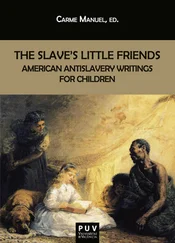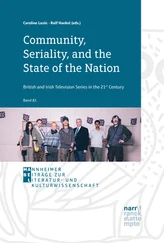GERMÁN LLORCA-ABAD
Universitat de València
1
Introduction
The passing of Law 46/1983 in Spain, also known as the Third Channel Bill, involved the establishment of the legal framework within which the current regional television channels in Spain were created. It was also the first major change since the start of regular broadcasts in Spain beginning in 1956. The regional channels, particularly ETB and TV3 contributed to radically alter the nature of television channels in Spain. Bearing this context in mind, this article is an attempt to describe TV ads broadcast on the Catalan channel, Tv3. My intention is to describe the characteristics of these ads and to establish if they contain enough distinctive elements to posit the existence of a Catalan advertising model which is distinguishable from models in other countries. My hypothesis is that any differences will be found at the level of discourse and design.
2
Television in the digital age
The media are undergoing somewhat of a revolution due to digital technologies, especially in the sphere of audiovisual communication. The press, radio and television are being forced to make changes which entail, among other things, modifications in the nature of the contents they deliver. I am especially interested in the case of television. It is, without doubt, the medium that has undergone the greatest upheavals –some, but not all of which– are beneficial, 1 as it is the medium that has experienced the passage from an analogue to a digital model most intensely (Francés-Doménech, 2009: 275).
If the container changes, i.e., from analogue to digital, it follows that so will the contents and this applies to advertising too. However, I contend that the television advertising model in Spain remains stable in terms of narrative forms, that is, the articulation of audio-visual content. Another question altogether is the consideration of television as a vehicle for advertising. While still maintaining the symbolic role of the hegemonic medium, it has shown the effects of recent variations in the advertising market. According to figures from INFOADEX study (2012: 8) spending on TV ads fell 9.5% in 2011. It is true that although this downward trend may turn out to be unstoppable, television still remains the most important conventional medium regarding advertising expenditure with a 40.6% share of the total, only 1.7% less than in 2010.
Catalan Television channels have been affected by change in the same way as channels in the rest of the Spanish State so one would not expect changes in the medium to influence the establishment of a hypothetical Catalan advertising model differently from the rest of the Spanish State. 2 However, my interest is precisely to carry out an assessment of Catalan advertising in order to highlight its peculiarities vis-à-vis other parts of the Spanish State, if any. To do this, besides the relevant theoretical contextualization, I have carried out a multimodal analysis of a selection of ads broadcast on the generalist channel, Tv3. I must, at this point, highlight two important premises to be taken into account: first, I regard Tv3 as the main exponent of a Catalan model of advertising as there is no doubt that it is the most influential channel broadcasting in Catalan in Catalonia. 3 Second, I propose that the characteristics that define a hypothetical Catalan model of advertising would emerge from this channel in particular.
Tv3 is part of the Corporació Catalana de Comunicació (Catalan Corporation of Communication) 4 the creation of which was officially announced in the Diari Oficial de la Generalitat Catalana or DOGC (Catalan State Bulletin, 1983). The other channels belonging to the corporation are: 33, a cultural channel; TV3CAT, a content-on-demand channel; Tv3HD, a high definition channel; 3/24, a news channel; Esport 3, a sports channel; 3XL, a television series and entertainment channel; and Super3, a children’s channel. 5 Advertisements and commercials are essentially the same on all these channels but adapted to the different types of audiences.
This multiplicity of channels is due to the move to digital broadcasting in April 2010. However, both the initial impulse at the birth of Catalan television and the subsequent effort to maintain its position as the main media reference point in Catalonia are attributable to the central role that managers and policy makers have given Tv3 since its inception. The broad nature of Tv3’s programming has influenced generations of Catalan citizens. 6 In this sense, it has contributed, and still contributes, to the consolidation of a Catalan alternative to other state-wide channels that offer programmes to a broad audience. But, what makes it unique beyond questions such as its legal status, its sphere of influence or its management culture is the importance of Tv3 in the creation of a Catalan national identity. It has been crucial in making Catalan a vehicle of communication in the media and forms part of what has been called the linguistic normalization process (see Baguet, 2003). This process is a cornerstone of government policy and has achieved wide consensus among the major parties. For now, however, we will focus on the unique characteristics of the commercials broadcast on this channel.
3
Parameters and coordinates for analysis
Television advertising can adopt several forms, but the type of advertising discourse I will centre on is the classic TV commercial in its basic and extended forms. Añaños (2011: 83-84) summarizes the other main advertising formats that can be found on television, most notably: product placement, sponsorship and overlays. The clearest difference between the classic TV ad and others is that the former is completely independent of the programmes which precede and follow it. The approach is in line with other authors who have made reference to this issue (González Requena and Ortiz de Zárate, 1995; Eguizábal, 2007; Volli, 2010). Specifically, Saborit (2000: 21) defines it as any “fragment of television which aims to sell us something” [my translation]. Later, moreover, the author states that, among the advertising formats that exist, the classic TV commercial achieves its unique status because it is clearly distinguishable from surrounding programmes (2000: 28).
The Tv3 Advertising Code ( Norma de Publicitat of Tv3 - CCMA, 2011), establishes a maximum of ten minutes of traditional commercials per hour of programming. Considering the variation in the length of commercials, it is rather complicated to calculate the exact number of distinct commercials broadcast daily. 7 Also we must bear in mind that most of commercials are repeated throughout the day. However, it is possible to establish the maximum amount of time allotted to advertising, which is set at around 250 minutes daily from Monday to Sunday between programmes. Many of these ads are also found in the rest of the Spanish State or created by ad agencies outside Catalonia. I will concentrate on ads made in Catalonia or for Catalan products as these will most likely be the ones that can be said to constitute a Catalan model of advertising.
We define a model as an entity that represents a real world object that is different from others unequivocally. The distinction lies in the delimitation of its attributes, as well as the relationship, or set of relationships, established with other entities. The literature found on this issue requires us to hone in on what the relevant aspects are, precisely because they have an impact on the choice of corpus to be used in our analysis.
It is estimated that in Spain there are around 1,500 advertising agencies. 8 Approximately two thirds of them operate in Madrid and Barcelona (AGEP and FNEP, 2009: 15-16), including the most important ones in the television advertising business. This fact is both a reflection and a result of the history of advertising in Spain 9 and allows us to conclude that these: these advertising agencies are responsible for making most of the commercials seen on Spanish television. Thus, there are no major differences between the commercials broadcast by a generalist TV channel like TV3 and its Spanish counterparts.
Читать дальше











